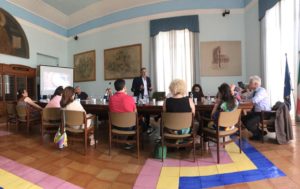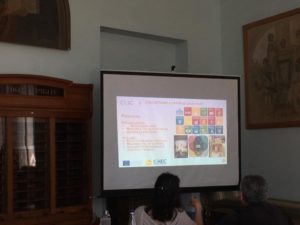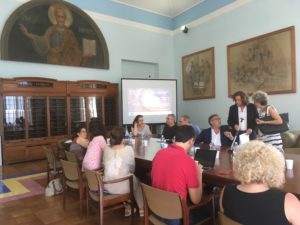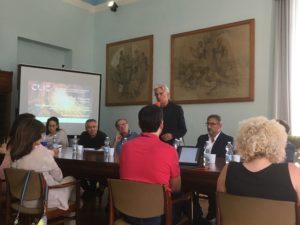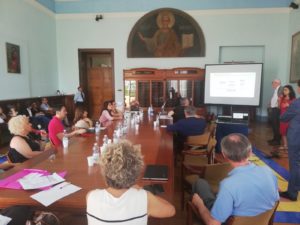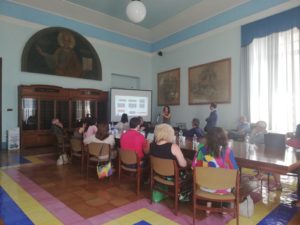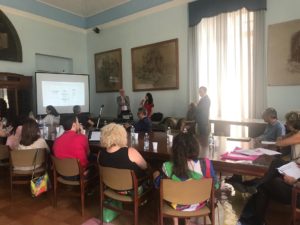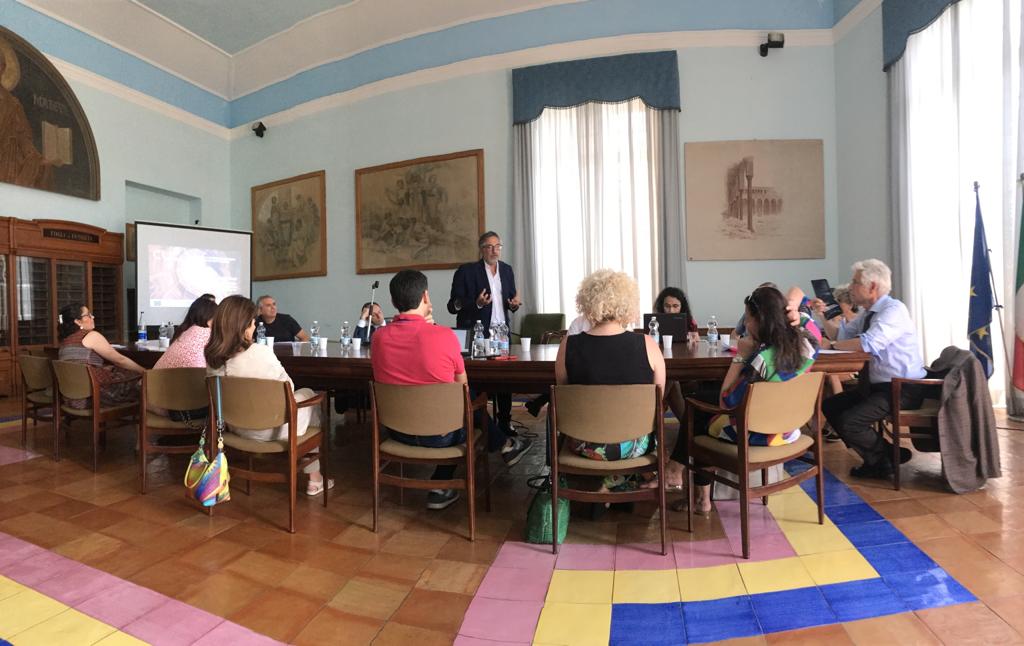
19Jun
Heritage Innovation Partnership #3 Salerno
Today, June 19, 2019, a technical meeting of the Heritage Innovation Partnerships (HIPs) will be held at the City Hall with the representatives of the administrative sectors of the Municipality of Salerno, in order to present and discuss the first results of the public consultation and of the workshops carried out in the first phase of the CLIC project, and to define a shared vision for the elaboration of the Local Action Plan (LAP) for the reuse of cultural heritage in Salerno, from the perspective of the circular economy and the emerging model of “circular city”.
The plan, which is being built thanks to the strong synergy between all the interested parties – stakeholders, public administration and a wide and qualified international scientific community -analyzes and systematizes the state of the art of the city and the current urban planning tools, initiatives, plans and programs undertaken, focusing the attention on the possible sources of funding, new management opportunities and new circular business models for the reuse of abandoned and undersused cultural heritag assets.
The first part of the LAP concerns the construction of the participatory process of co-design and co-creation in Salerno, in relation to the mapping of tangible and intangible cultural heritage, to the actors involved and, therefore, to all the “best practices” of reuse of local cultural heritage, with a focus on the criticalities found and the administrative, financial and management barriers, with the aim of overcoming them in the planning of future actions.
The LAP, which is one of the central outputs of the testing and innovation process of the CLIC project, will focus on actions and implementation tools for the adaptive reuse of cultural and landscape heritage as a driver for a “circular city”.
The LAP will be based on the inner identity of Salerno, starting from its famous Medical School of Salerno and will include the assets in a state of abandonment or underutilization detected during the process of collaborative mapping, in the historic center and in the more peripheral and marginal areas, towards a circular urban and “culture-led” regeneration.
